Lords of Mantua, the Gonzagas ruled the Lombard city bathed by the banks of the Mincio River for several centuries: from their seizure of power with the famous expulsion of the Bonacolsi, masterfully depicted in the large painting preserved in the Ducal Palace by Domenico Morone in 1494, which took place in the 14th century, their rule lasted until the 18th century. In the Renaissance, the family gave rise to one of the most influential lordships, gathering under their court the most prestigious intellectuals and artists of the time. Particularly since in 1490 Isabella d’Este, daughter of Ercole I d’Este and Eleonora of Aragon, was united in marriage to Francesco II Gonzaga, eldest male child of the Marquis of Mantua Federico I Gonzaga and Margaret of Wittelsbach. Marquise Isabella was a great patron of the arts, still considered among the most celebrated women of the Italian Renaissance. She gave birth in 1500 to Federico II Gonzaga, who in 1519 became marquis of Mant ua and in 1530 was appointed first duke of Mantua by Emperor Charles V. It is thanks to the Gonzagas that Mantua first became one of the most flourishing Italian courts both culturally and artistically, and today a city that retains all the beauty that made it so important in the past. Federico II Gonzaga is credited with the construction and decoration of the entire complex of Palazzo Te as a place of leisure and recreation. One could therefore start from here an itinerary to discover the art, culture, nature and food and wine of Mantua. At the edge of the historic center and immersed in a large park now much frequented by citizens for long walks or for a pleasant break in the middle of the lawn or at the various kiosks in the shade of the plants, Palazzo Te takes its name from the island on which it originally stood: in ancient times Mantua was surrounded by four lakes (today there are three instead) formed by the Mincio River, and near the island on which the city was built there was another island called Tejeto, later shortened to Te. Francesco II Gonzaga had had some stables and stables built there in the early 1500s for his thoroughbred horses, which his son Frederick II later had not only renovated but also built an imposing palace there to “accommodate a little place that he might go there and reduce himself sometimes to desinate, or to dine for ispasso.” He commissioned the grandiose project from Giulio Romano, a pupil of Raphael. The palace was built and decorated over a period of about ten years, from 1525 to 1535. On the outside, the facades are ashlar-worked and appear to be punctuated by smooth Doric pilasters; the large square-shaped inner courtyard is enclosed on four sides. The interior is decorated entirely to a design by Giulio Romano with splendid cycles of frescoes. We then pass through the Chamber of Ovid with scenes from the Metamorphoses, the Chamber of the Enterprises with the salamander alluding to Frederick II’s love affair with Isabella Boschetti, the Loggia of the Muses, the Room of the Horses dedicated to the favorite horses of the Gonzaga stable reproduced on the walls at life size, the Room of Cupid and Psyche, the Apartment of the Secret Garden where Frederick II took refuge, but the most spectacular is undoubtedly the Chamber of the Giants, a masterpiece of illusionism in which a single scene, that of the fall of the Giants crushed under columns, buildings and boulders, occupies all the chamfered walls and the ceiling, creating a totally immersive place, inside which the visitor feels an integral part of the scene. An opportunity to visit Palazzo Te and learn more about the figure of Giulio Romano is the exhibition Giulio Romano. The Power of Things scheduled from October 8, 2022 to January 8, 2023.
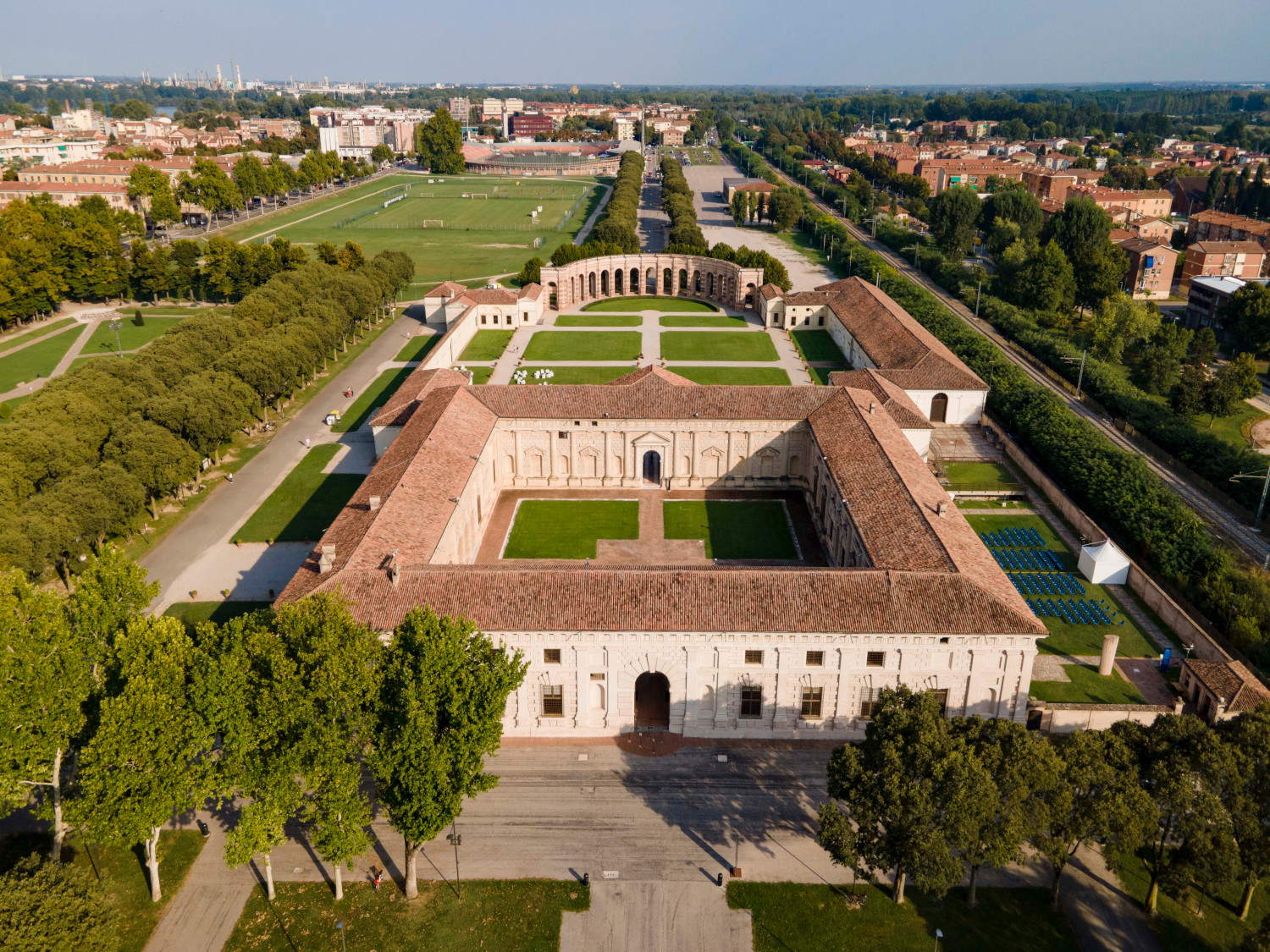
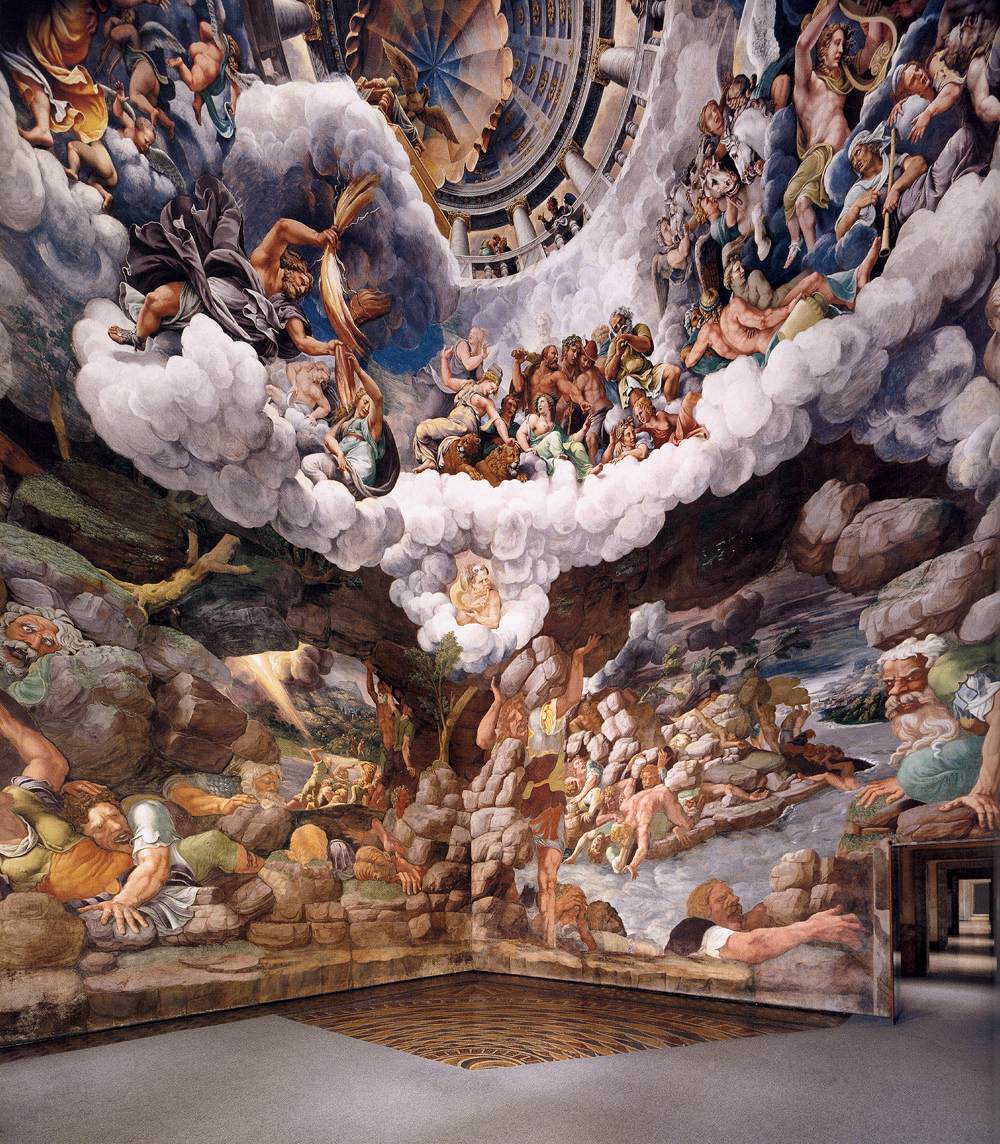
Not far from Palazzo Te, on the other hand, stands the Temple of San Sebastiano, the first building constructed in the city, starting in 1460, designed by the famous architect and humanist Leon Battista Alberti and commissioned by Marquis Ludovico II Gonzaga, son of Gianfrancesco Gonzaga and Paola Malatesta. It is one of the earliest examples of a church with a central plan of the Renaissance: in the architect’s intent, the building was in fact to have a central plan consisting of a Greek cross inscribed in a square with three semicircular apses, and the four arms were to be covered with barrel vaults; the structure is also repeated in the lower church, with independent access. The Temple’s current appearance largely corresponds to Leon Battista Alberti’s architectural intentions, although between 1922 and 1925 it was decided to transform the building into a war memorial, modifying the openings and adding the two access staircases in the facade. The actual use of the Temple remains uncertain to this day, but it is thought that it was built as a family tomb. Completed in 1476 by Luca Fancelli, it is also called Famedio because it houses the tumulus dedicated to the Martyrs of Belfiore. Recent works to re-functionalize the spaces, planned to start in 2019, have restored the church’s original identity as an Albertian monument with the ambition of making it a new space for discussion on architectural themes. Leon Battista Alberti played a fundamental role in redesigning the urban aspect of the city and setting up a “factory” thought that has come down to contemporary times. On the occasion of the 550th anniversary of his death, recurring this year, conferences, concerts, visits and presentations will take place until spring 2023 in a rich program of Alberti celebrations, shared between the Diocese, the Municipality of Mantua and the Alberti Foundation.
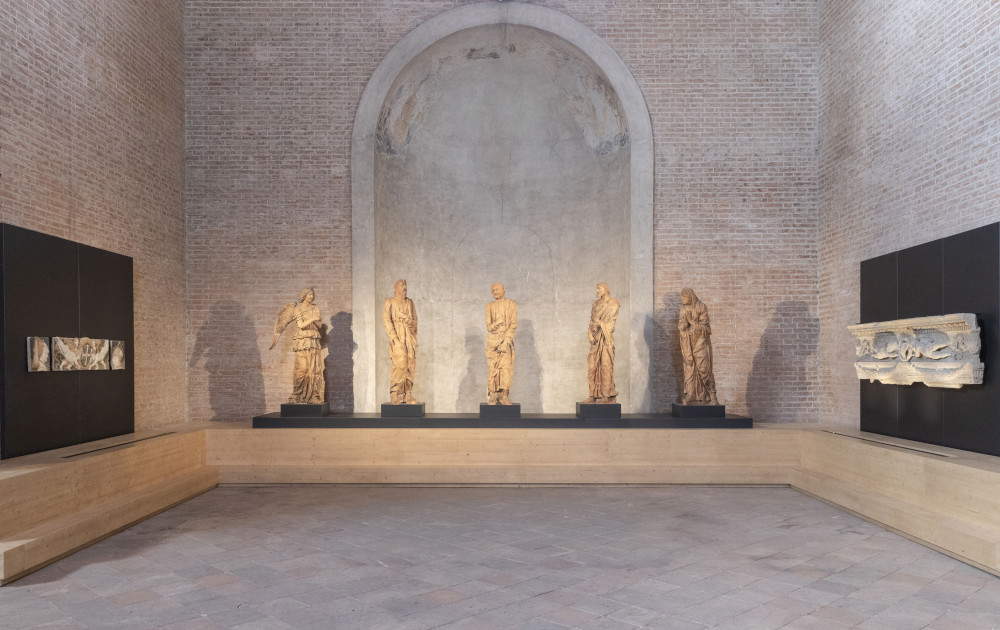
In 2021 Giulio Romano’s Pescherie, consisting of arched porticoes with attic and rectangular windows and located on either side of the medieval bridge that crossed the Rio, a waterway that runs through the city from Lake Superior to Lake Inferiore, were reopened after restoration. Built between 1536 and 1546 by Giulio Romano to house the fish market, the eastern and western ones, characterized by rusticated ashlar, have survived.
Continuing to the central Piazza Sordello, we then come to the Basilica of Sant’Andrea, a masterpiece by Leon Battista Alberti, whose construction began in 1472 on a commission from Ludovico II Gonzaga but was finished three centuries later, in 1765. The facade recalls the pattern of a Roman triumphal arch inspired by ancient models; this is set between Corinthian pilasters, constituting one of the first Renaissance monuments in which this architectural solution called the giant order was adopted. With a Latin cross plan, the interior has a single nave with side chapels, covered by a barrel vault and surmounted by a large Baroque dome designed by Filippo Juvarra. The crypt houses the Sacred Vessels containing the blood of Christ that is thought to have been brought to Mantua by the Roman centurion Longinus, who pierced Jesus’ side, causing blood mixed with water to come out (however, they are only visible on Good Friday). The Basilica houses in the first chapel on the left, dedicated to St. John the Baptist and decorated by a young Correggio, the tomb of Andrea Mantegna, a painter who died in the city in 1506. Giulio Romano also worked in this important sacred building: in fact, he initiated the decoration of the Boschetti chapel dedicated to Saint Longinus, producing two altarpieces, namely anAdoration of the Shepherds with Saints John the Evangelist and Longinus costuded today in the Louvre (a copy of it is currently in the chapel), and a Crucifixion, which has remained in situ instead, where Christ is surrounded by clouds in the Dürerian style.
Then rises in nearby Piazza delle Erbe the Rotunda of San Lorenzo, the oldest church in Mantua founded in the late 11th and early 12th centuries, probably at the behest of Matilda of Canossa. Dedicated to St. Lawrence and inspired by the church of the Holy Sepulchre in Jerusalem, it has a circular shape and is built in terracotta according to the Lombard tradition of the time. Originally it was completely frescoed, but now those of some of the small vaults are visible: probably the author was a master of the 11th century, related to the Byzantine school. In the apse there is a 15th-century fragment depicting St. Lawrence on the gridiron. Closed to worship in 1579 at the behest of Guglielmo Gonzaga, for over three hundred years it was used for housing and stores; in the early twentieth century it was restored and reopened for worship and entrusted to the Dominican community from 1926. In the nearby Palazzo della Ragione it is possible to visit the exhibition dedicated to Fortunato Depero Depero automatico acrobatico until February 26, 2023.
We then reach Piazza Sordello, where the Cathedral of St. Peter stands. Of early Christian origin and rebuilt in the Middle Ages in the Romanesque style, it was expanded in the early 15th century at the behest of Francesco I Gonzaga. The marble facade with rose windows and pinnacles is due to Jacobello and Pierpaolo delle Masegne; two rows of Gothic chapels designed by Jacobello delle Masegne were later added. In 1545 Giulio Romano was called upon to renovate the cathedral by Cardinal Ercole Gonzaga, following a fire: the artist kept the exterior intact, but increased the naves from three to five, drawing on the model of St. Peter’s Basilica in Rome. The present all-marble facade was built between 1756 and 1761 by Roman Nicolò Baschiera at the initiative of Bishop Antonio Guidi di Bagno. The altarpieces were also executed in the 1650s, by painters from Verona (including Paolo Farinati, Domenico Brusasorci, Paolo Caliari) and painters from the school of Giulio Romano, such as Fermo Ghisoni, Ippolito Costa and possibly Giovanni Battista Bertani. Other works of art include an early Christian sarcophagus, frescoes in the Baptistery (early 14th century), the Chapel of the Incoronata, and the sacristy with a vault frescoed by a follower of Andrea Mantegna.
If Palazzo Te was a place of pleasure and leisure, the entire complex of the Ducal Palace and the Castle of San Giorgio, which stretches between Piazza Sordello and the lakefront, was considered the center of Gonzaga power. There are splendid rooms here divided into the Corte Vecchia, the oldest core of the Palace, which includes the Hall of the Princes or Pisanello, the Hall of the Popes, the Gallery of Mirrors, the Ducal Apartment, the Zodiac Hall, the Hall of the Rivers overlooking the Hanging Garden, and the Apartment of the Tapestries, transformed in the 18th century to house the nine tapestries woven to cartoons by Raphael. There is also the Apartment of Isabella d’Este, which also includes the famous Studiolo and Grotta, arriving then at the marquise’s private garden. The Corte Nuova, built starting in 1536 by Giulio Romano, includes instead the Sala di Manto, the Sala dei Cavalli, the Sala delle Teste, the Sala di Troia, the latter decorated with frescoes by Giulio Romano and his workshop, and the Camera dei Cesari. Finally, Piazza Castello leads to the Castle of San Giorgio, surrounded on four sides by a moat: it was built at the end of the 14th century by the Capitano del Popolo Francesco I Gonzaga and later transformed by Ludovico II into a marquis’ residence. Its most famous room is the Bridal Chamber with its famous oculus, frescoed between 1465 and 1474 by Andrea Mantegna to celebrate the Gonzaga family.
Another gem to see in the city is definitely Palazzo d’Arco, which is located not far from Piazza Virgiliana. Built in neoclassical style starting in 1784 to a design by architect Antonio Colonna, it was the residence of the d’Arco counts, a family of Trentino origin who had moved to Mantua in the mid-18th century. In addition to the extraordinary Sala dello Zodiaco, frescoed by Giovanni Maria Falconetto and located in the 15th-century mansion, a remnant of an earlier building, visitors can admire the rooms of the mansion, rich in frescoes and masterpieces painted by Lorenzo Lotto, Tintoretto, Lorenzo Costa, Alessandro Turchi, Bartolomeo Manfredi and many others. The visit also includes the hall of the ancestors with their portraits, the large library, and the lush garden with large greenhouse.
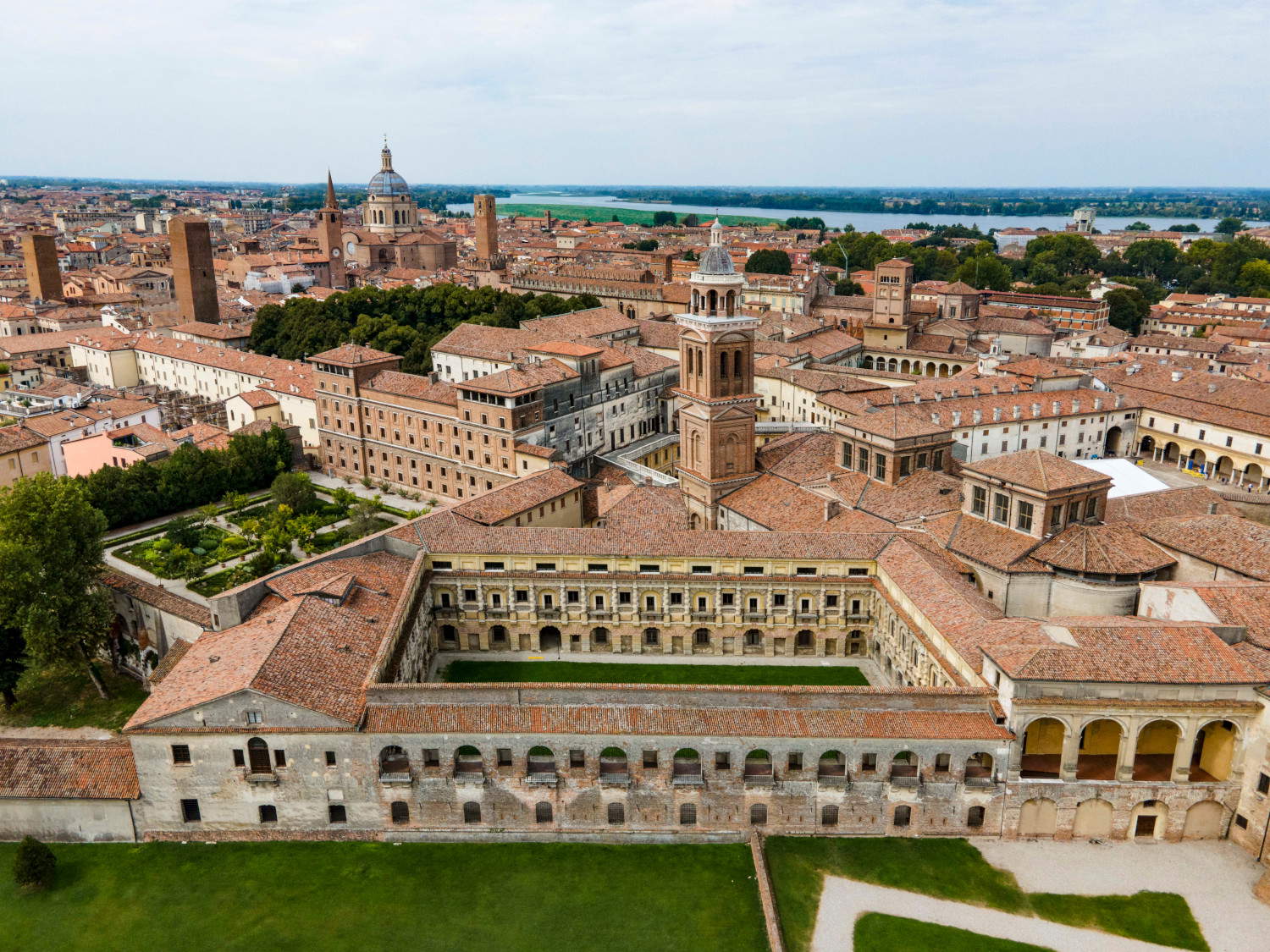
 The interior of the Cathedral of Mantua. Ph.Credit Luca Pietrobono
The interior of the Cathedral of Mantua. Ph.Credit Luca Pietrobono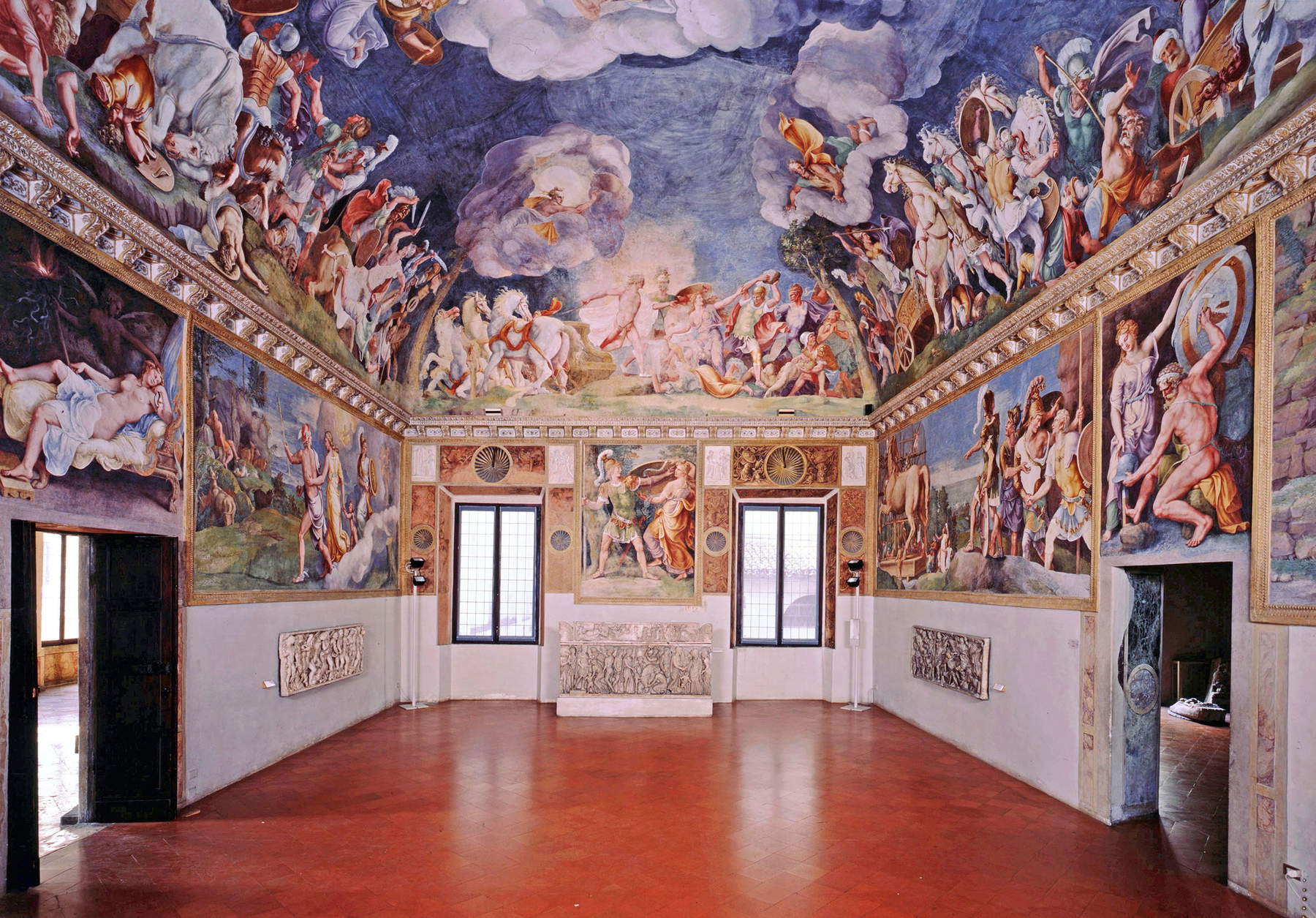
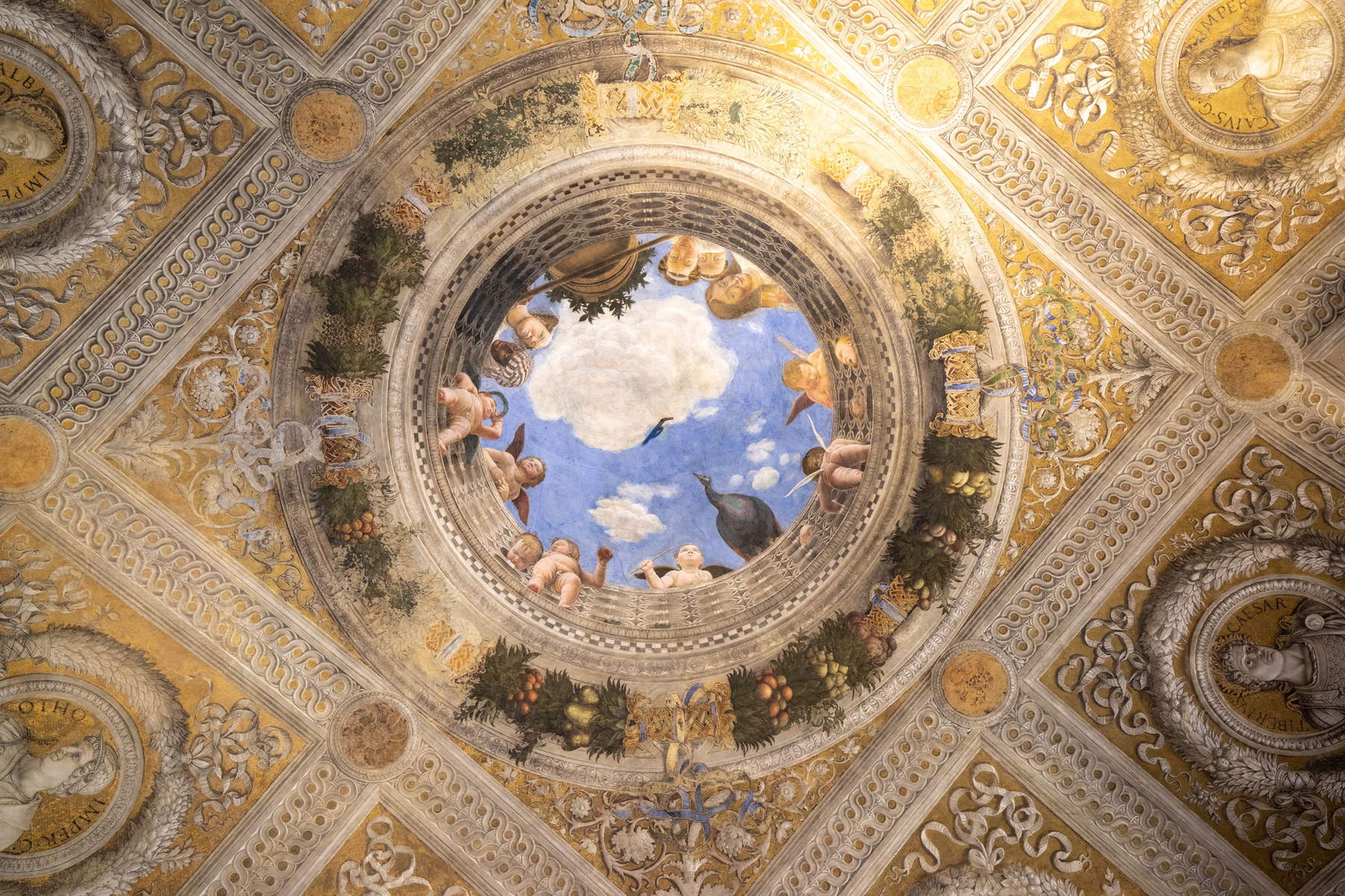 The famous oculus of the Bridal Chamber. Ph. Credit Alessandro Pasquali - Danae Project
The famous oculus of the Bridal Chamber. Ph. Credit Alessandro Pasquali - Danae Project
A popular destination in every season is the so-called peri-urban park that runs along the lake: tree-lined and entirely passable on foot or by bicycle for a healthy walk in the midst of nature, it is also equipped with special stations for physical activity and offers bike paths, rest areas and observation points. An internal motorboat system departs from the lakefront for a relaxing visit to the Mincio Park. An area protected by the Lombardy Region since 1984, the Park extends into the province of Mantua along the Mincio River in the territory of thirteen municipalities. From an environmental point of view, the Park is rich and varied: the extraordinary presence of birds, with about 300 species including nesting, sedentary, migratory or passage birds, constitutes a highly valuable wildlife heritage. So do all the “green” elements of the Park, from the aquatic vegetation of the wetlands to the lowland or hygrophilous forests, which represent the heritage of the flora of the Terre del Mincio. The highest concentration of plant and floristic varieties is found in the two Nature Reserves, Valli del Mincio and Vallazza, among them, the white water lily, water chestnut, hibiscus, marsh iris, marsh gentian and the striking islands of lotus flower, a non-native species introduced in the lakes of Mantua since 1921, but which has now become an icon. In terms of wildlife, many bird species are recorded, including herons, diurnal raptors, grebes and ducks, cormorants and white storks; amphibians and reptiles are also present, such as the Lataste frog, crested newt and marsh tortoise. There are also numerous fish species: among them pike and royal perch. Mantua is also a sustainable city with its 114 kilometers of bicycle network, making it one of the most significant stops for bicycle tourism. Famous are the Via Carolingia, the Mantova-Sabbioneta Unesco Ciclovia and the Mantova-San Benedetto Po Ciclovia.
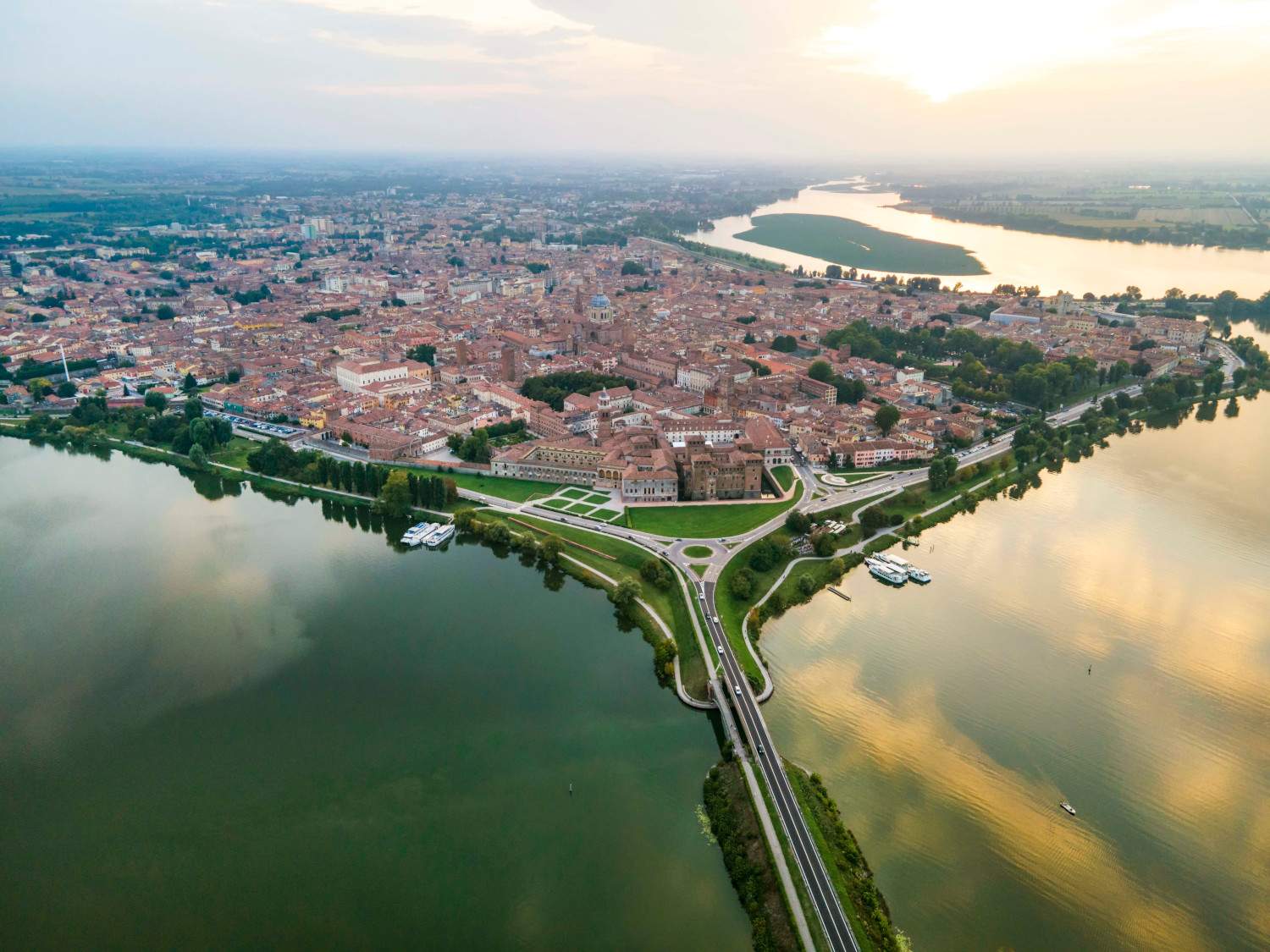
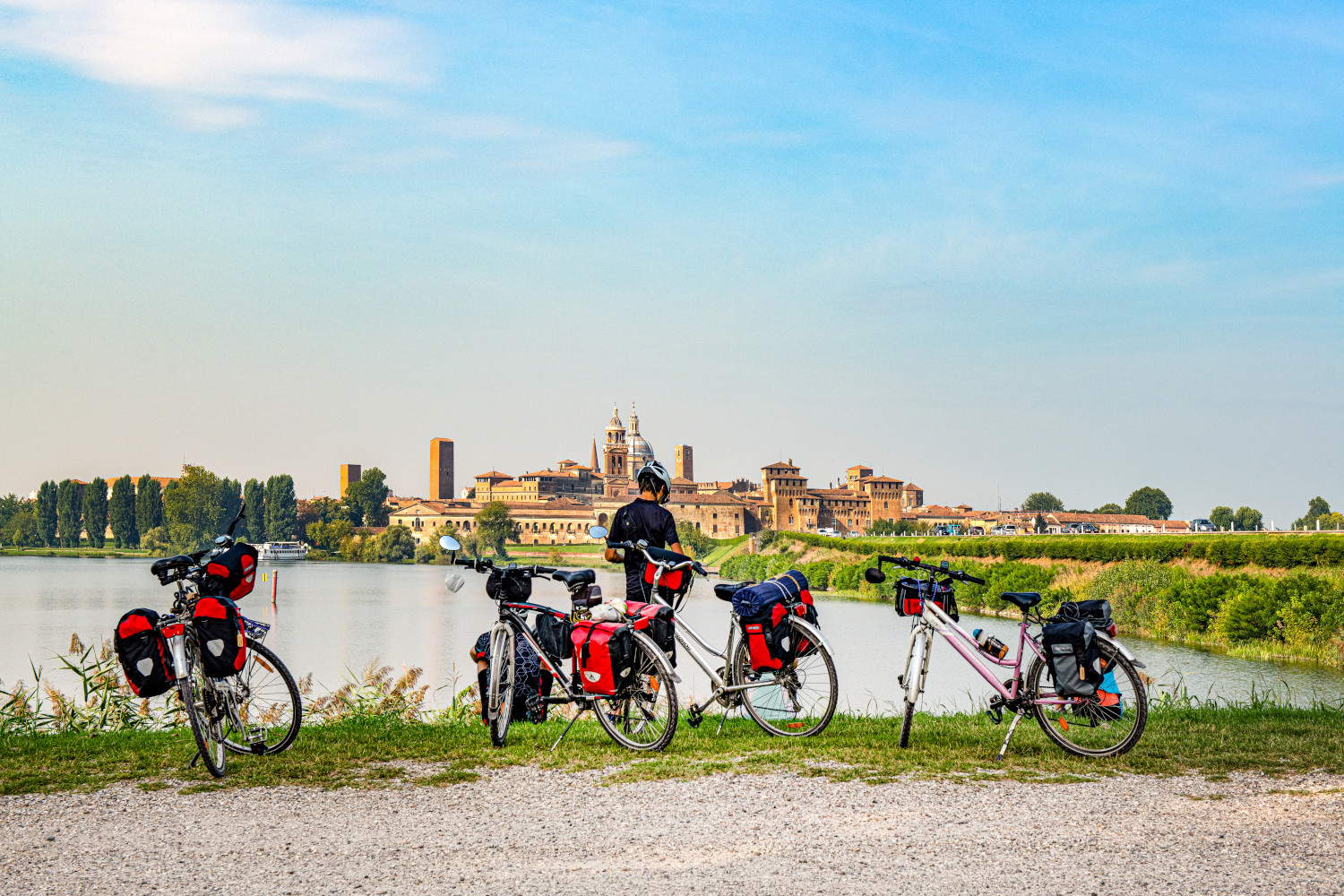
To complete the sightseeing experience, all that remains is to try the traditional specialties, a cuisine of princes and people. Among the first courses, you can taste pumpkin tortelli dressed with butter and sage or riso alla pilota, Vialone Nano rice with crumbled pork; among the main courses, pike in sauce and stracotto; for a sweet conclusion, tradition offers ample choice, Sbrisolona made with almonds and cornmeal, Torta Elvezia, Anello di Monaco, Torta delle rose, Torta di tagliatelle, Bussolano, Torta di San Biagio, and Torta Paradiso.
Mantua is a tourist destination in every season. Many visitors come to admire its artistic and architectural masterpieces, exhibitions and rich natural heritage. Interesting occasions to visit are also the many events that the city hosts throughout the year, starring in festivals, celebrations and meeting occasions. The Municipality of Mantua has gathered in a single schedule the events proposed by the Associations and Institutions operating in the area, thus offering an immersive experience in the land of the Gonzaga.
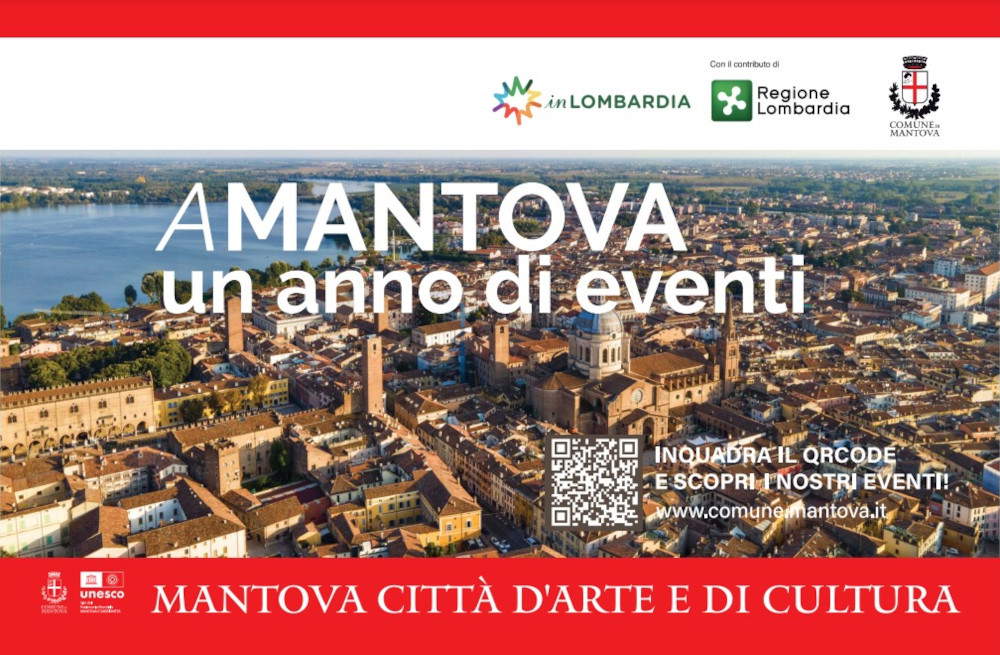
 |
| Mantua city of water, art and nature |
Warning: the translation into English of the original Italian article was created using automatic tools. We undertake to review all articles, but we do not guarantee the total absence of inaccuracies in the translation due to the program. You can find the original by clicking on the ITA button. If you find any mistake,please contact us.